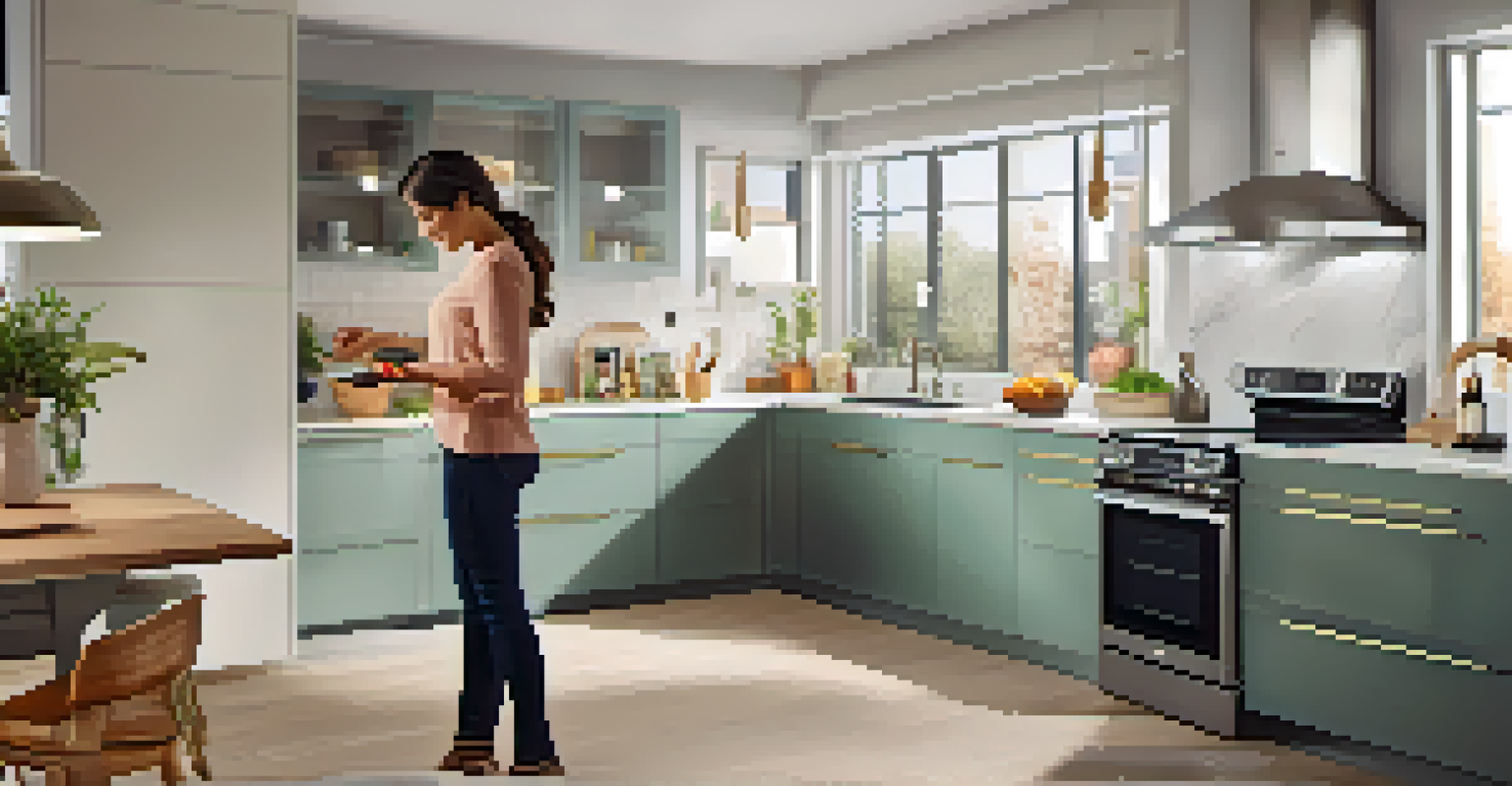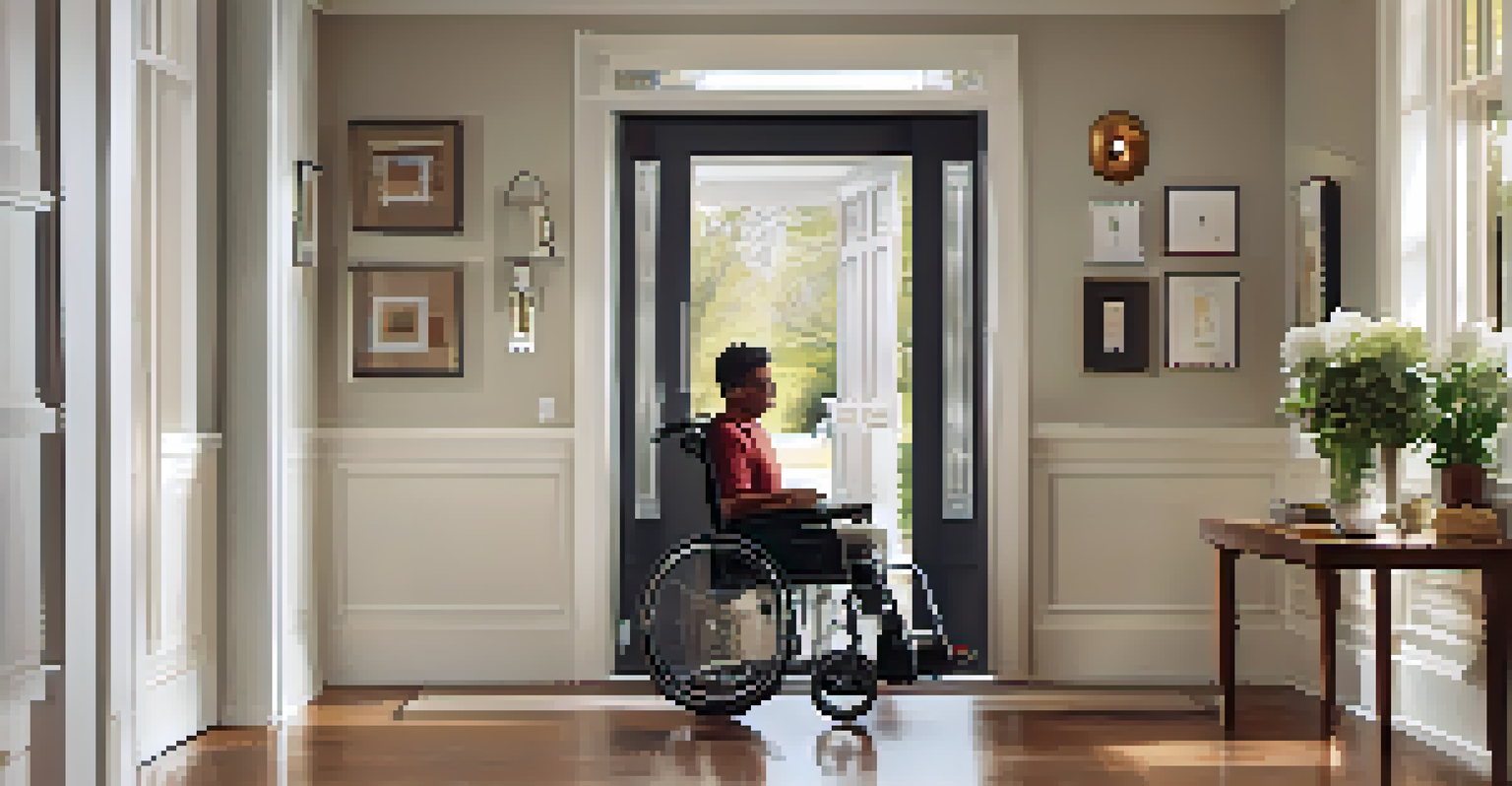Smart Home Technologies for Enhanced Accessibility

Understanding Smart Home Technologies and Accessibility
Smart home technologies are designed to make our lives easier, and when it comes to accessibility, their impact is profound. These devices can help individuals with various disabilities manage their homes more effectively, enhancing independence and comfort. From voice-activated assistants to automated lighting, these innovations cater to a wide range of needs.
Technology is best when it brings people together.
Accessibility in smart homes means creating an environment where everyone can thrive. For instance, consider how a simple voice command can control multiple devices, reducing the need for physical interaction. This shift not only benefits those with mobility challenges but also supports elderly individuals who may struggle with technology.
As we delve into the world of smart home technologies, we’ll explore specific devices and solutions that promote accessibility. By understanding these tools, we can appreciate how they transform everyday living into a more inclusive experience.
Voice Assistants: Your Personal Accessibility Ally
Voice assistants like Amazon Alexa and Google Assistant have revolutionized how we interact with our homes. They enable users to control appliances, lights, and even security systems with simple voice commands. This hands-free approach is particularly beneficial for individuals with mobility impairments, allowing them to manage their environment effortlessly.

Imagine a person with limited mobility who can adjust their thermostat or turn on their favorite music just by speaking. Voice assistants not only provide convenience but also foster a sense of autonomy and control over one’s living space. This independence can significantly enhance their quality of life.
Smart Homes Enhance Independence
Smart home technologies empower individuals with disabilities by providing tools that improve accessibility and promote autonomy.
Additionally, these voice-activated systems can be integrated with other smart devices, creating a seamless network of control. As technology continues to evolve, voice assistants will likely become even more sophisticated, further enhancing accessibility for everyone.
Smart Lighting Solutions for Enhanced Navigation
Smart lighting systems are a game-changer for individuals with visual impairments or those who require assistance navigating their homes. These systems can be programmed to turn on automatically when someone enters a room or adjusted via an app to suit individual needs. This not only improves safety but also creates a more welcoming atmosphere.
The greatest disability is the inability to accept and embrace differences.
For example, imagine a person who struggles with navigating dark spaces at night. With smart lighting, pathways can be illuminated automatically, reducing the risk of accidents and promoting confidence. Moreover, these lights can be customized to different settings, such as dimming for relaxation or brightening for tasks.
Incorporating smart lighting into a home doesn’t just enhance accessibility; it also adds a layer of comfort and style. With various colors and brightness settings, individuals can create the perfect ambiance while ensuring their home remains safe and functional.
Automated Door Systems: Safe and Convenient Access
Automated door systems provide an excellent solution for individuals with mobility challenges, enabling them to enter and exit their homes with ease. These systems can be operated through remote controls, smartphones, or even voice commands, eliminating the need for manual effort. This technology not only enhances accessibility but also increases security.
Consider someone using a wheelchair who might struggle with traditional door handles. An automated door can open smoothly with just a tap on a smartphone or a voice command, making it a breeze to enter or exit. This feature significantly enhances independence and reduces frustration.
Voice Assistants Foster Control
Voice assistants enable hands-free management of home environments, offering significant benefits for those with mobility challenges.
In addition to ease of access, automated doors can be integrated with security systems to provide alerts when someone approaches. This combination of convenience and safety makes automated door systems an essential component of a smart, accessible home.
Home Monitoring Systems for Peace of Mind
Home monitoring systems play a crucial role in enhancing accessibility, especially for elderly individuals or those with medical conditions. These systems can track health metrics, monitor activity levels, and even alert caregivers in case of emergencies. This technology empowers individuals to live independently while ensuring that help is always available when needed.
For example, a smart home monitoring system can detect falls or unusual inactivity and send notifications to family members or caregivers. This allows for a quick response in critical situations, enhancing the safety and wellbeing of the individual. Such systems provide not just security but also peace of mind for both users and their loved ones.
Furthermore, many of these monitoring solutions offer user-friendly interfaces that make them accessible to individuals of all ages. This focus on usability ensures that everyone can benefit from the safety and convenience of home monitoring.
Smart Appliances: Reducing Physical Barriers
Smart appliances are designed to make daily tasks simpler and more efficient, especially for individuals with physical limitations. From refrigerators that can notify users of low supplies to ovens that can be preheated remotely, these devices remove traditional barriers in the kitchen and beyond. They allow for a more autonomous lifestyle, making everyday chores manageable.
Imagine a person who finds it challenging to bend down to operate a traditional oven. With a smart oven, they can set cooking times and temperatures from their smartphone, ensuring meals are prepared without physical strain. This kind of technology not only promotes independence but also encourages individuals to engage in cooking and other household activities.
Future of Accessibility is Bright
Advancements in technology promise to create even more inclusive smart homes that cater to diverse needs and enhance quality of life.
Moreover, as smart appliances continue to evolve, they are becoming more intuitive and user-friendly. This accessibility means that individuals can tailor their home environments to meet their specific needs, creating spaces that truly support their lifestyles.
Customized Home Automation for Individual Needs
One of the most exciting aspects of smart home technologies is their ability to be customized to meet individual needs. Home automation systems can be tailored to respond to specific requirements, ensuring that every feature serves a purpose in enhancing accessibility. This personalization is key to creating a truly inclusive environment.
For instance, a user might program their smart home system to adjust lighting, temperature, and even music based on the time of day or their activities. This level of customization allows individuals to create an atmosphere that suits their preferences while accommodating their needs. It’s like having a personal assistant that understands and responds to every requirement.

As technology advances, the possibilities for customization will only expand. This means that the future of smart homes will likely be even more inclusive, catering to a diverse range of needs and ensuring that everyone can enjoy the benefits of modern living.
The Future of Smart Home Accessibility Technologies
As we look ahead, the future of smart home technologies for accessibility is promising. Innovations are continually emerging, driven by the goal of creating more inclusive environments for everyone. This evolution is fueled by a growing awareness of the diverse needs of individuals and the potential of technology to meet those needs.
New developments in artificial intelligence and machine learning will likely lead to even smarter systems that can learn and adapt to users' habits and preferences. Imagine a home that anticipates when you need more light or warmth and adjusts automatically. Such advancements could dramatically enhance the quality of life for many people.
Ultimately, the goal is to create homes that not only accommodate but also empower individuals. As smart home technologies continue to evolve, they will undoubtedly play a vital role in ensuring that everyone, regardless of their abilities, can enjoy the comforts and conveniences of modern living.